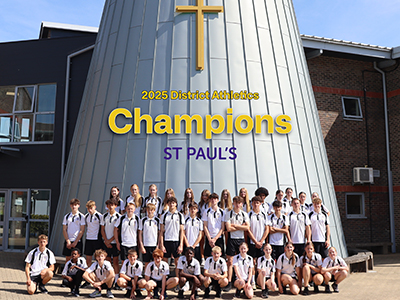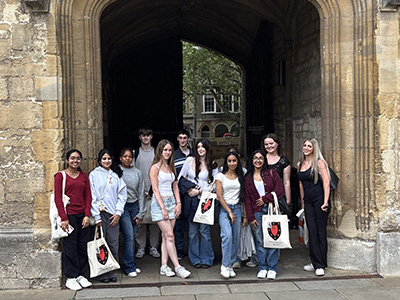National Funding Formula Announcement
Following the Secretary of State for Education’s announcement about school funding on 14 September 2017, Headteachers working across 17 counties – from Cornwall to Norfolk - believe that you have the right to know the facts that will affect your child’s education for years to come.
The attached information sheet draws only from information provided by the Department of Education and the Independent Institute of Fiscal Studies. The implications of the newly announced funding formula are profound.
Is £1.3 billion enough?
It should be acknowledged that introducing a new national formula was complex and challenging. This Government is the first in a generation to try and grasp the nettle. Schools that have previously been at or below the “breadline” do receive some improvements to their funding position, but the universal view of Headteachers across the 17 counties is that this is not enough to make a real difference.
In July 2017, the Government announced that schools would benefit from £1.3 billion of additional funding. This does not, however, make up for the £3 billion overall reduction that was already announced and planned for 2015-20. Over a five year period, there is a shortfall of approximately £1.7 billion. The Institute of Fiscal Studies states that during 2015-20 school budgets will have been cut in real terms by 4.6%.
This means that there is simply not enough money in the system. As a result, the Department for Education is unable to implement a new funding formula that meaningfully addresses the two principal aims of their new policy. These are, firstly, to fund all schools adequately and secondly, to ensure that schools with the same socio-economic / school based characteristics in one area of the country will be funded the same as another in a different part of the country.
So, how do the new arrangements work?
Instead, due to the £1.7 billion shortfall, the new funding formula is dependent on a series of limits (capping) to either how much a school can gain or potentially lose from the formula. The caps are largely arbitrary and mean that any new per pupil funding is often based on the previously discredited formula.
Better funded schools gain funding protection, which means that their relative positions are unaltered. We have no real issue with this. Schools such as ours know how challenging and difficult it is when budgets are reduced and squeezed to the limit. The problem is, however, that in order to fund these protections, the Government is limiting what many other low funded schools will gain under the new formula. Crucially, these differences will not last for a year or two, they will last for years and years.
What does this mean for our schools?
The examples shown on the attached factsheet are truly shocking. Parents and Carers need to be clear that schools in very similar socio-economic areas will continue to have entirely different levels of funding. This often amounts to hundreds of thousands of pounds in the primary sector and even millions of pounds across the secondary sector.
Far from being resolved, your child’s education will still be at the behest of a post code funding lottery. Some schools with the same socio-economic characteristics will be able to afford teacher/pupil class sizes of 20, whilst others will have to make do with 35. Some children will have three Teaching Assistants in their class, whilst others from similar backgrounds in a different part of the country will have none. At the end of the day though, all pupils will take exactly the same Key Stage 2 tests and go on to take the same maths and English GCSEs. Their futures are simply not being fairly catered for.
By the same token, “similar schools” with entirely different budgets will be made accountable via identical league tables and OFSTED inspections. How can this be fair or reasonable?
So what do we do now?
As stated previously, costs will continue to rise and again differently funded schools will have different abilities to soak them up. All school budgets will be under severe pressure, but some will be under much greater strain than others.
As Headteachers, we simply want to see every child’s school in England, funded adequately. It is not about all schools receiving identical amounts of money, but it is about the fair application of a formula right across the country.
We recognise that there has been some improvement to our budgets and that as a country we must live within our means. We cannot, however, suggest the new formula is, in any way, satisfactory. The finances of very low funded schools are still insufficient to provide the service that your child deserves.
Your influence as parents/carers is utterly vital. Please discuss these issues with your local MPs and local representatives. There are also many active local parent groups who you can engage with. We will continue to lobby vigorously too and provide further updates shortly.
In his budget in March 2018, the Chancellor must do better to support your child’s education. MPs and education ministers must continue to bang the drum until every child’s education is fully and fairly funded.
National Funding Formula - Fact Sheet
- A new National Funding Formula (NFF) will come into effect from 2018/19. There is a two year period of transition from the old formula to the new.
- The new formula provides a core element of funding per pupil which is then topped up via a number of factors such as deprivation of the area in which they live, prior attainment (for secondary school, for example, this is how well each child did in their Year 6 SATs) and a variety of other socio-economic/school based “characteristics”.
- The very lowest funded schools should** benefit from a newly introduced minimum level of per pupil funding. Primary (2018-19) £3300 and (2019-20) £3500. Secondary (2018-19) £4600 and (2019-20) £4800.
- These minimum funding arrangements will allow the (currently) very lowest funded schools to gain around 6% in 2018-19 and 10% in 2019-20. All other gains for the majority of low funded areas are capped at 3% (2018-19) and a further 2.5% (2019-20). All other schools, regardless of their current funding position, will gain 0.5% (2018-19) rising to 1% (2019-20).
- If the funding formula was introduced in full so that no capping was needed at all, all schools across England would be funded purely on the basis of the new formula arrangements.
- The tables below use the Department for Education’s own statistics to show how funding disparities will be maintained even if a school in one area of the country has similar characteristics to those in another. This is because of the capping system noted above. On average, York is the lowest funded Local Authority in England, Reading is at the average, Greenwich is in the top 10% of funding arrangements and Hackney is the highest funded authority.
| Example A - Primary School of 400 pupils 2018-19 | |
|---|---|
| Average per pupil funding - York = | 400 x £3548 = £1,419,200 |
| Average per pupil funding - Reading = | 400 x £3938 = £1,575,200 |
| Difference between York and Reading = | £156,000 |
| Average per pupil funding - Greenwich = | 400 x £4898 = £1,959,200 |
| Difference between York and Greenwich = | £540,000 |
| Average per pupil funding - Hackney = | 400 x £5887 = £2,354,800 |
| Difference between York and Hackney = | £935,600 |
| Example B - Primary School of 1400 pupils 2018-19 | |
|---|---|
| Average per pupil funding - York = | 1400 x £4704 = £6,585,600 |
| Average per pupil funding - Reading = | 1400 x £5106 = £7,148,400 |
| Difference between York and Reading = | £562,800 |
| Average per pupil funding - Greenwich = | 1400 x £6451 = £9,031,400 |
| Difference between York and Greenwich = | £2,445,800 |
| Average per pupil funding - Hackney = | 1400 x £7840 = £10,976,000 |
| Difference between York and Hackney = | £4,390,400 |
These differences do not include additional per pupil funding for pupils who are in receipt of Free School Meals - the Pupil Premium allowance - £1320 Reception to Year 6 and £935 Year 7-11.
- These per pupil funding arrangements are likely to be further reduced as local authorities can, and will need to use some elements of per pupil funding to pay for other student services such as funding students with High Needs. In fact, the minimum guaranteed per pupil uplift is 0.5%**.
- Costs to schools continue to rise. Inflation is running at 2.9%. Schools now have to pay an Apprenticeship Levy and an Educational Services Grant to support the work of schools and Local Authorities is no longer fully funded. Additional pension, national insurance and salary costs that school budgets must pay for are unfunded. The Independent Institute of Fiscal Studies states that in spite of the £1.3 billion provided to schools in the DfE’s funding formula statement overall school budgets have /will decline by 4.6% in real terms during the financial period 2015 – 2020.
| West Sussex - Primary School of 400 pupils 2018-19 | |
|---|---|
| Average per pupil funding – West Sussex = | 400 x £3677 = £1,470,800 |
| Average per pupil funding - Reading = | 400 x £3938 = £1,575,200 |
| Difference between West Sussex and Reading | £104,400 |
| Average per pupil funding - Greenwich = | 400 x £4898 = £1,959,200 |
| Difference between West Sussex and Greenwich = | £488,400 |
| Average per pupil funding - Hackney = | 400 x £5887 = £2,354,800 |
| Difference between West Sussex and Hackney = | £884,000 |
| West Sussex– Secondary School with 1400 students 2018-19 | |
|---|---|
| Average per pupil funding – West Sussex = | 1400 x £4756 = £6,658,400 |
| Average per pupil funding - Reading = | 1400 x £5106 = £7,148,400 |
| Difference between West Sussex and Reading = | £490,000 |
| Average per pupil funding - Greenwich = | 1400 x £6451 = £9,031,400 |
| Difference between West Sussex and Greenwich = | £2,373,000 |
| Average per pupil funding - Hackney = | 1400 x £7840 = £10,976,000 |
| Difference between West Sussex and Hackney = | £4,317,600 |








